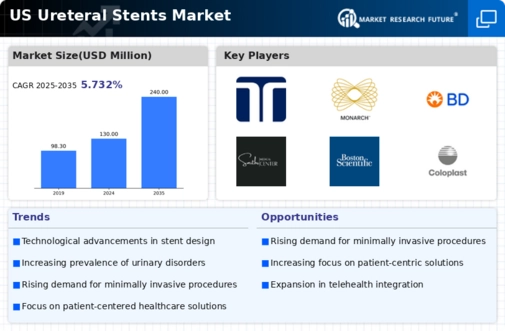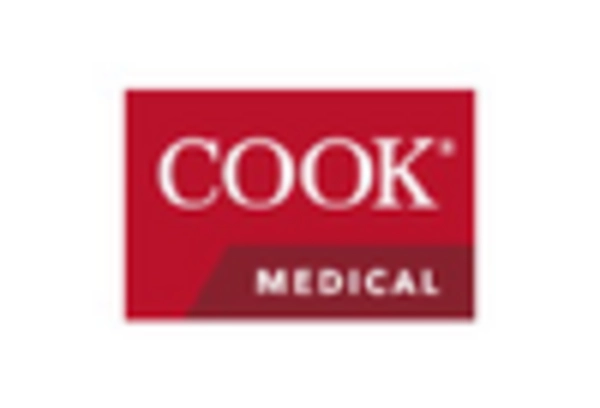Rising Healthcare Expenditure
In the United States, healthcare expenditure continues to rise, which is positively impacting the ureteral stents market. Increased spending on healthcare services allows for better access to advanced medical technologies, including ureteral stents. According to recent data, healthcare spending in the US is expected to reach $4.1 trillion by 2025, indicating a robust market environment for medical devices. This financial commitment from both public and private sectors is likely to drive growth in the ureteral stents market, as hospitals invest in state-of-the-art equipment and training for healthcare professionals.
Growing Awareness of Urological Health
There is a notable increase in awareness regarding urological health among the general population, which is driving demand in the ureteral stents market. Educational campaigns and initiatives by healthcare organizations are informing patients about the importance of early diagnosis and treatment of urological disorders. This heightened awareness is likely to lead to an increase in patient consultations and subsequent procedures involving ureteral stents. The ureteral stents market stands to gain from this trend, as more individuals seek medical intervention for conditions that necessitate stenting.
Technological Innovations in Stent Design
Innovations in the design and materials used for ureteral stents are significantly influencing the ureteral stents market. Newer stent designs, such as those incorporating biocompatible materials and advanced coatings, are being developed to reduce complications and improve patient comfort. These advancements are expected to enhance the overall effectiveness of ureteral stenting procedures. The ureteral stents market is likely to see increased adoption of these innovative products, as healthcare providers aim to improve patient outcomes and reduce the incidence of stent-related complications.
Aging Population and Associated Health Issues
The aging population in the United States is contributing to the growth of the ureteral stents market. As individuals age, they are more susceptible to various urological disorders, including kidney stones and urinary obstructions. This demographic shift is expected to increase the demand for ureteral stenting procedures, as older adults often require medical interventions for these conditions. The ureteral stents market is poised to expand in response to this trend, as healthcare systems adapt to meet the needs of an aging population.
Increasing Demand for Minimally Invasive Procedures
The growing preference for minimally invasive surgical techniques is a notable driver in the ureteral stents market. Patients and healthcare providers are increasingly opting for procedures that reduce recovery time and minimize surgical trauma. This trend is supported by advancements in medical technology, which have made ureteral stenting procedures safer and more effective. As a result, the market is projected to witness a compound annual growth rate (CAGR) of approximately 6.5% over the next few years. The ureteral stents market is likely to benefit from this shift, as more hospitals and clinics adopt these innovative techniques to enhance patient outcomes.

















Leave a Comment